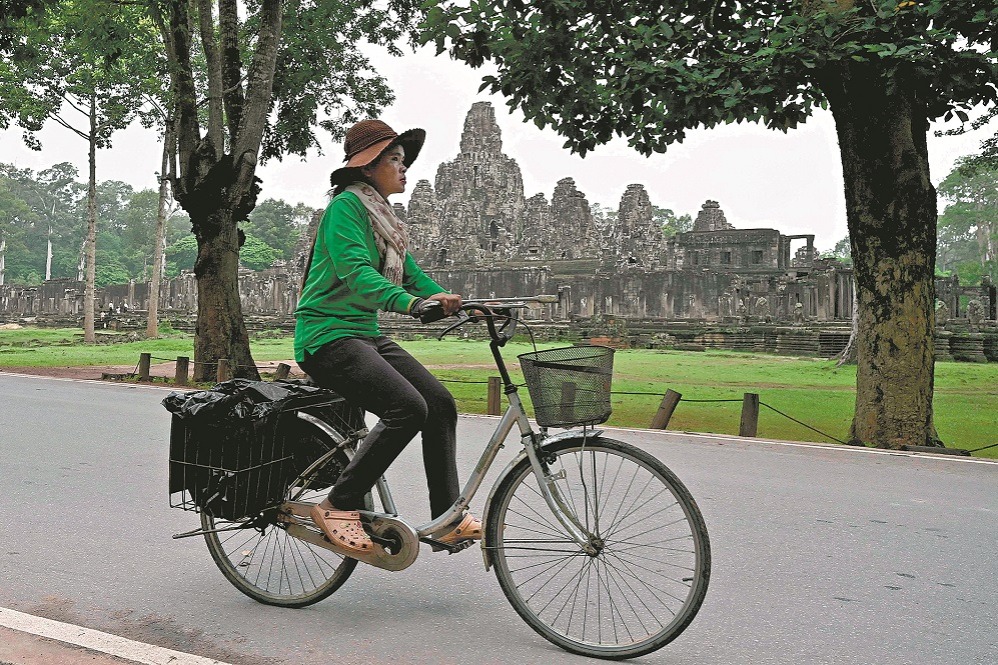Pear-blossom tourism revives ancient village in NW China
Xinhua | Updated: 2021-04-10 15:15
Taking photos, tasting delicacies and strolling among the blossoming pear trees in Nanchangtan Village, Yao Changde feels totally immersed in the beautiful scenery.
"It's wonderful for me to travel in such a beautiful village, and I really enjoy the quietness and peace here," says Yao, 80, who came to the village with his wife and two daughters.
Yao is attending an ongoing pear-blossom festival in Nanchangtan, located in Shapotou District, in the city of Zhongwei, northwest China's Ningxia Hui Autonomous Region. It is a national-level historical and cultural village, with a history stretching back more than 1,200 years.
Surrounded by high mountains and the Yellow River -- China's second longest river -- Nanchangtan is said to have sheltered royals from the Western Xia Dynasty (1038-1227) during a war, providing them with a self-sufficient life in seclusion.
The natural terrain might have protected villagers from invaders, but it also cut them off from the outside world. They didn't have electricity here until the year 2000, and they waited another decade for access to the internet.
According to village Party chief Ta Shouqing, sheepskin rafts were once the only transportation for villagers venturing further afield.
"It was such a poverty-stricken place that all young villagers wanted to escape," said Ta, adding that there was a time when about two thirds of villagers traveled to cities in search of better education and more job opportunities.
However, thanks to China's national campaign against poverty, this ancient village has seen improvements to its infrastructure, and the gradual flourishing of the tourism business has helped.
Nanchangtan has 166 centuries-old pear trees, with the oldest about 500 years old. When the blossom arrives, the village is draped in white.
In 2004, the authorities in Nanchangtan began promoting various tourism festivals, attracting tourists eager to experience rural lifestyles. The villagers saw an increase in their incomes as a result, said Ta.
"Visiting here makes me feel peaceful inside and totally refreshed, escaping from my busy working life for a while," said Yao's daughter, adding that her father was so enchanted that he even wrote a poem about the pear blossom.
With the boom in tourism, many villagers have returned to run homestay businesses. Li Gang used to raise sheep for a living, and he later worked outside the village to make money in order to provide a better education for his three children.
Now he owns a homestay that can accommodate 30 tourists at full capacity. All his rooms were booked for this year's pear-blossom festival, adding more than 20,000 yuan (3,052 U.S. dollars) to his yearly earnings.
"In the period before October, tourists visit our village every weekend, and they love the mountains, the Yellow River and the fresh air," said Li.
According to Ta, 53 families in the village run homestay businesses, and the village can have a tourism income of about 600,000 yuan during the annual pear-blossom festival. Last year, the annual per-capita disposable income of villagers exceeded 13,000 yuan, from only 3,400 yuan in 2013.
Villager Meng Jiangyu is the same age as Yao. He owns four pear trees, under which he spent his childhood. During the tourism festival, Meng sets up a stall to tout specialties like dried pears, dates and Chinese walnuts.
"They sell well, and it's quite convenient to do transactions by scanning QR codes," said Meng. "Life is getting better and better, and I feel happy."























